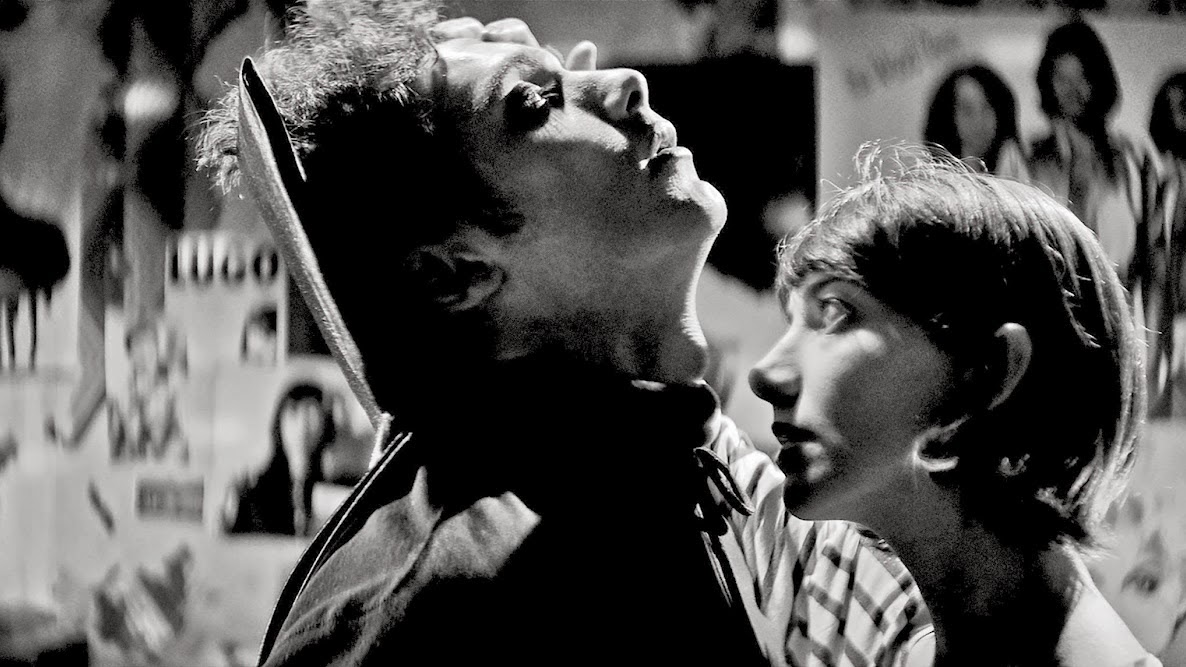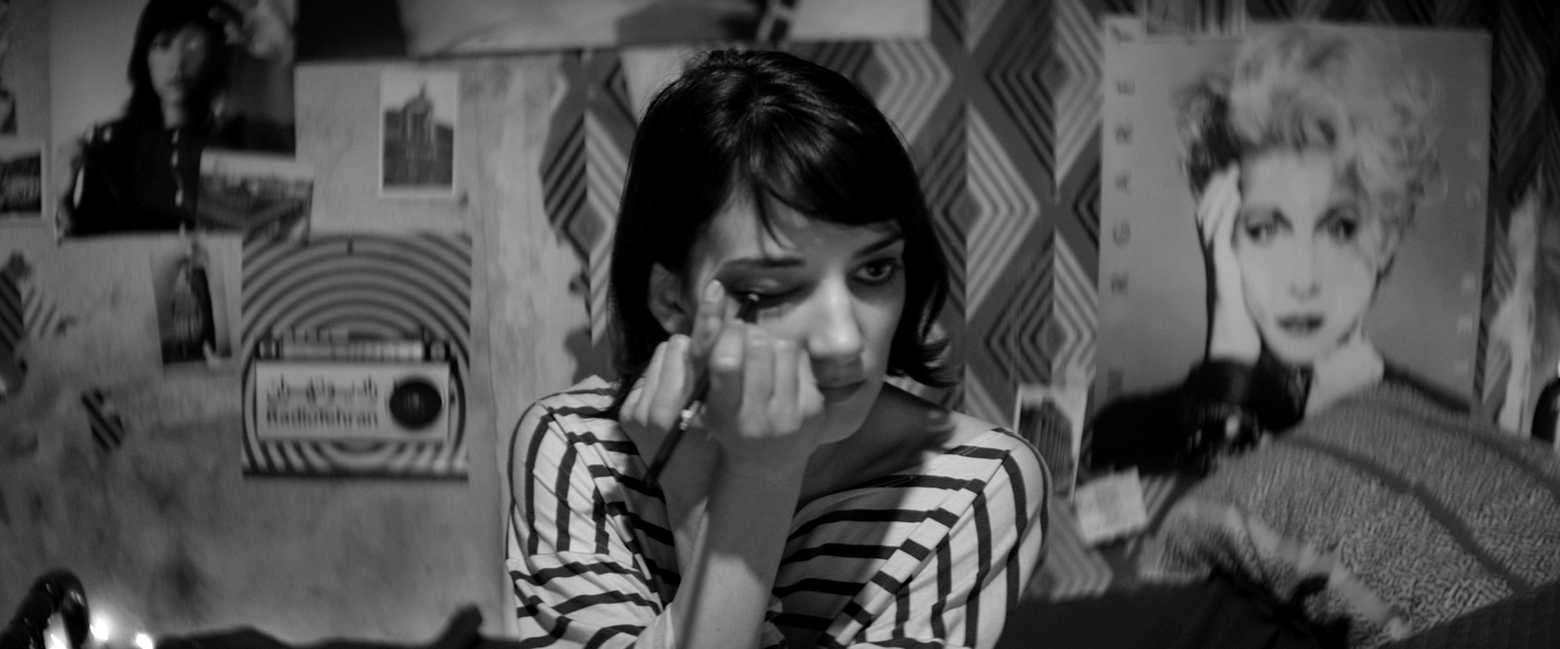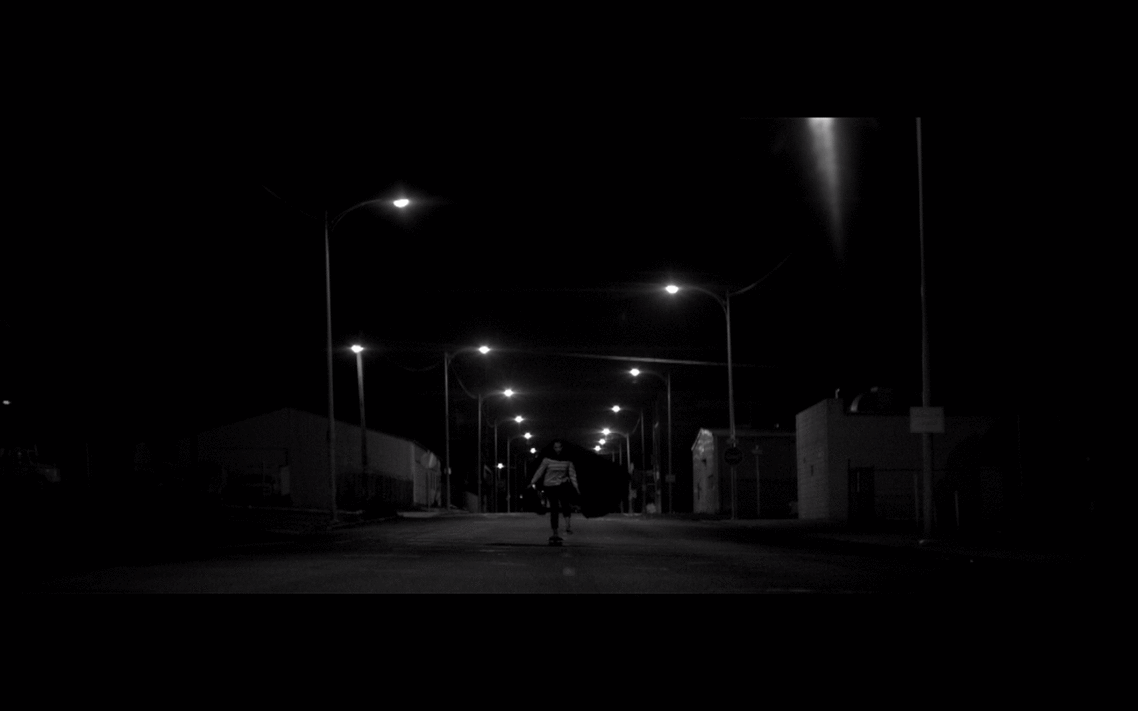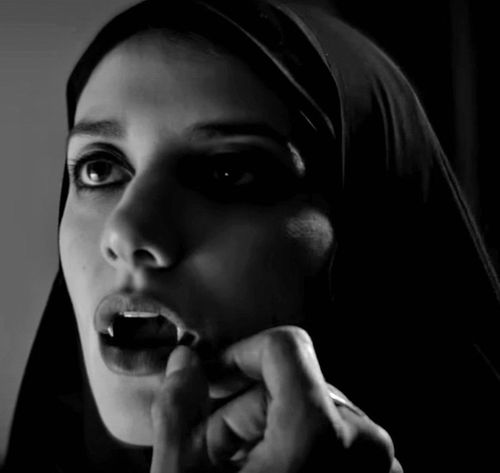Vibe:
Highly stylized and reminiscient of directors like David Lynch, Jim Jarmusch, and Sergio Leone (but not in a derivative way). It's mainly neo-noir, but with a heavy dash of spaghetti western, and a touch of classic horror. Composed mainly of wide shots and shot in lush black and white, Amirpour definitely treats atmosphere with the utmost importance.
If I were still in college, I would turn some of the most gorgeous shots from this movie into posters and plaster my dorm room walls with them.

This film is cool as fuck, and knows it. The references it makes are so expertly layered that it's possible to spend nearly the entire film trying to unravel them. You think that's a Madonna poster on The Girl's wall? Bitch, please. Look again. (It's Margaret Atwood.)

Best time to watch:
Now. I've watched this film every Halloween since it came out in 2014. It's not scary or creepy, but creates the ideal tonal atmosphere for the season.
Whenever you're thinking about learning to skateboard, but feel like late 20s is too old for skinned knees and massive bruises. The Girl looks so fucking cool, gliding effortless down abandoned streets with her chador blowing in the wind, exposing her striped Jean Seberg shirt. I am fairly convinced I could recreate this exact scene in Detroit with a few months of practice.

If you're feeling lonely and want to revel in the loneliness. After I had finished college and moved far away from a guy I liked at the time (who, spoiler alert, was terrible), I spent a solid few months watching films about forlorn or unrequited love and feeling sorry for myself. At that point, I probably saw "Eternal Sunshine of the Spotless Mind," "The Science of Sleep," and "Lost Highway" at least 10 times each. Had "A Girl Walks Home Alone at Night" existed at the time, it surely would have also been in heavy rotation.
Worst time to watch:
If you're in the mood for something truly scary. This movie isn't going to keep you up at night or force you to sleep with the lights on for the rest of the month. Like most vampire movies I've seen, it's far more atmospheric than horrifying. Even "Trouble Every Day" is scarier than this one.
I also wouldn't recommend watching this movie with another person unless it's in a theater. I've watched "A Girl Walk Home Alone at Night" with friends on my couch and alone on my laptop with a pair of headphones. I can 100% confirm that the latter experience was far superior. In order to fully succumb to the strange, beautiful tone, it's helpful to fully immerse yourself.
Where to watch:
It used to be on Netflix, but those jerks have since removed it. I rented it on Amazon Prime for $3.99 in HD.
Quick summary:
A young, badass vampire woman lurks around Bad City, Iran in search of her next victim. In the process, she meets a young, James Dean wannabe, the world's best cat, and a bunch of creepy men who absolutely deserve to be brutally murdered.
Thoughts:
The Girl (Sheila Vand) is one of my all-time favorite cinematic characters. I know I would be friends with her based solely on her bedroom decor, taste in music, and preferred mode of transportation. Just try to watch this scene without falling in love with her:
She's not exactly a fully fleshed out character, but I believe this is intentional; her mystery is partially what I find so alluring.
The people we see her kill are mostly assholes who deserve it. First, there's Saeed (Dominic Rains), the drug dealer with "SEX" tattooed on his neck. He wants everyone to know he's disgusting before he even opens his mouth. It's delightful to watch him pick up the Girl, who he obviously thinks is a prostitute, and slowly realize that things are not what they seem.
After attacking Saeed, the Girl could have easily killed Atti (Mozhan Marno) after following her home one night. The Girl seems to feel connected to her, though, and refrains. When they talk in Atti's house, the Girl reveals details about her that most people probably wouldn't pick up on:
You're sad. You don't remember what you want. You don't remember wanting. It passed long ago. And nothing ever changes.
Atti's expression confirms that the Girl's observations are accurate and cutting, even though her matter-of-fact response back attempts to make light of their emotional impact.
After the Girl leaves Atti's house, she makes her second kill: a homeless man in the street. This murder is the only unjustified one we see her commit. The film doesn't make it clear, but perhaps she only did it because she was desperate for blood after wasting so much time talking to Atti. Or... maybe the moral compass I've imagined she has is just a figment of my own imagination. The Girl seems sensitive and observational in her daily life, and it seems that this also holds true as it applies to her bloodlust.
The third man she murders is Hossein (Marshall Manesh), heroin and prostitute addict. He's a scummy dude who forces Atti to shoot up with him and doesn't deserve to have such an amazing cat. He also holds his son, Arash (Arash Marandi) back and prevents him from getting the hell out of Bad City and moving on to something better. Based on what we know, his death feels justified.
And speaking of Arash... the Girl likes him and is capable of preventing herself from killing him. Like the Girl, Arash is sensitive, kind, and attractive. Even when he sees the cat and realizes what she is/must have done, he doesn't judge the Girl too harshly. The film ends with their wayward glances, united by Hossein's cat, the Thunderbird's front seat, and Kiosk's "Yarom Bia."
Amirpour's portrait of a sensitive, lonely, romantic, punk vampire is incredibly appealing. It takes all the best aesthetic elements of the genre and mashes them together with insider film, literature, and music references. In this New York Times article, Amirpour says something I find fascinating:
It’s weird, because Sheila [Vand] and I were talking about how, with this movie, we kind of made our own place that was as Iranian as we are, which is a mash-up of so many things.
Bad City is Amirpour's Iranian American upbringing brought to life. It's a place that, up until the creation of this film, probably only existed in her head. One of the most powerful aspects of filmmaking is building a world exactly to your specifications and finding that it resonates with other people. An experience that may have felt isolating and weird for a long time can come to life and become impactful for many, not just Iranian Americans who grew up in Bakersfield, California.
As Amirpour says, Bad City isn't anything like the real Iran, but that's because it's based on her idea of Iran... a place she would comfortably belong. Bad City is Amirpour's personal aesthetic, preferences, and imagination come to life. It's her Iranian American experience made tangible. The fact that it appeals so much to people of different backgrounds illustrates the uniting power of art. In the way that Arash and the Girl come together because of shared passions and unspoken connection, fans of this film unite.

